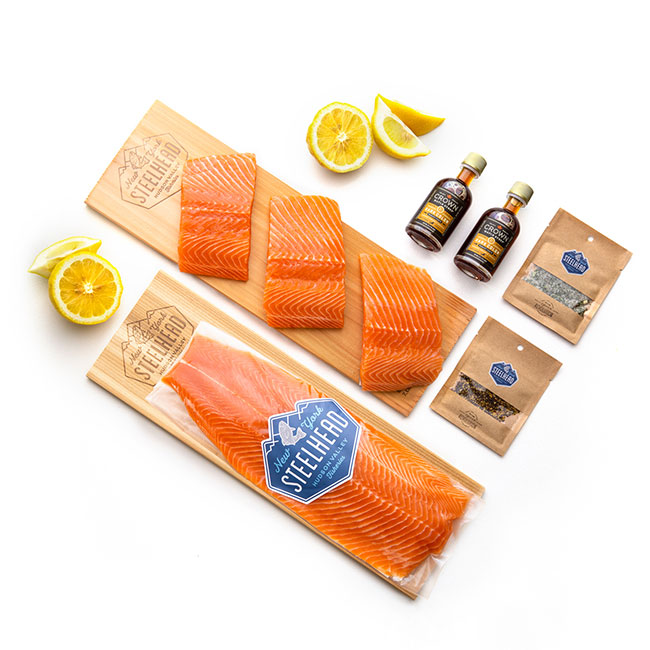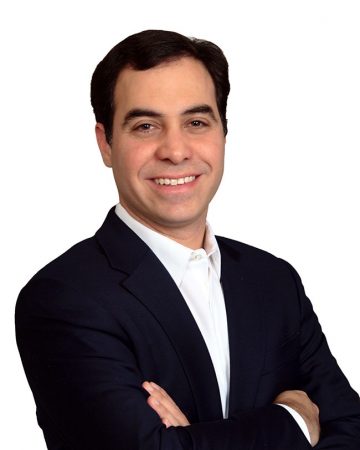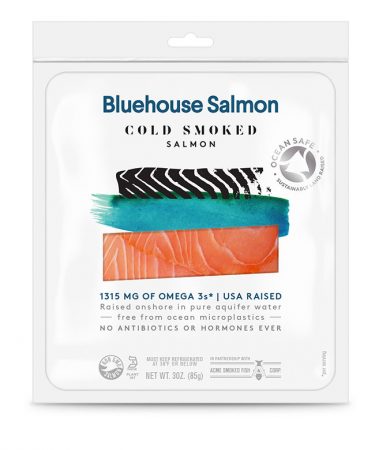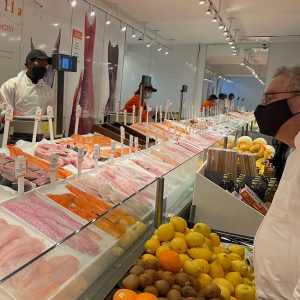
Features
Management
Sustainability
Marketing matters
Marketing may solve the consumer education gap, but can it create preference for RAS brands?
May 11, 2021 By Lynn Fantom
 Online marketers like Hudson Valley Fisheries and Ideal Fish offer add-ons, like cedar planks and seasoning, to complement fresh and smoked fish. This Hudson Valley Fisheries grill kit was featured in Oprah Magazine. Photo: Hudson Valley Fisheries
Online marketers like Hudson Valley Fisheries and Ideal Fish offer add-ons, like cedar planks and seasoning, to complement fresh and smoked fish. This Hudson Valley Fisheries grill kit was featured in Oprah Magazine. Photo: Hudson Valley Fisheries
A well-dressed woman walks up to the fish counter at a gourmet grocery on the upper east side of Manhattan and asks for salmon. “I want wild and organic,” she says.
That anecdote, both funny and true, illustrates just how confused most consumers are about their seafood options today. Addressing this dilemma is taking on new importance now as more RAS producers enter the marketplace and more Americans confidently tackle cooking fish at home.
Leading RAS companies, both behemoths and niche players, are upping their game in marketing. After an artful pivot from restaurant to retail, they are studying the essence of how consumers make buying decisions. It’s not just about a new distributor or slogan.
As Nordic Aquafarm’s Erik Heim said after a recent round of research, “When these people stand at the seafood counter and there are price and attribute differences, what, in the end, guides their final choice?” That’s the moment of truth.
Inside that consumer’s head is a lot of noise, after all. Are there micro-plastics in wild-caught fish? But what about the antibiotics in farmed fish? After seeing the documentary Seaspiracy on Netflix, many wonder if they should be eating fish at all. It’s all likely mislabeled anyway.
“The greatest challenge by far is education,” says James MacKnight, who strategized the marketing for Ideal Fish. “And it’s a long, arduous, uphill journey.”
Ideal Fish: One-to-one selling
When MacKnight began working with founder, Eric Pedersen, two years ago, he first focused on the name of the Connecticut-based RAS producer – Great American Aquaculture – and recommended changing it to Ideal Fish. A fish raised in RAS, he postulated, was the “purest fish available”: no growth hormones, no antibiotics, no GMOs, no microplastics, as the website now proclaims. His first step was to stand in the shoes of the customer.
MacKnight also realized that the customer for Pedersen’s RAS-farmed branzino, which costs more than its cousins raised in Mediterranean net pens, would have to be passionate enough about these attributes to pay for them. So, he went to the upscale northeast purveyors, Kings Food Markets and Balducci’s, to launch.

Marketing expert Max Francia sold designer fragrances, George Foreman grills and houseplants prior to arrival as marketing director at Atlantic Sapphire.
A marketer’s choice of retailer or restaurant is not only a way to reach target customers. It affects brand perception as well. Within two months, a story about Ideal Fish appeared in The New York Times.
But the process of educating the consumer continues – “one fish at a time,” MacKnight says. He has accompanied his distributor on sales calls to retailers “so they, in turn, can go and educate people as well.” At one point, he told the distributor that his dream was to see a section in the middle of the fish counter for “raised in RAS – because it’s a different beast altogether.”
Last October, that enthusiasm drove MacKnight to found The Educated Fish, a venture to identify best-in-class companies in RAS and help get them established in the U.S.
The e-commerce site of Ideal Fish (MacKnight still leads its marketing) has proven to be a vehicle for that. Nova Scotia-based Sustainable Blue is now selling its Atlantic salmon there. Online shoppers can also buy rainbow trout and caviar, introduced in March. The carefully vetted fish selections, including smoked varieties, come solo or in sampler packs. Plus, there are add-ons, like two seafood rubs and cedar planks. They’re convenient for the consumer and increase the seller’s average order size.
The online venture is not going to rival Whole Foods any time soon, but it is increasingly sophisticated. To maximize sales, cookies from website visits chase down consumers on Facebook to give them another chance to buy. The company has also engaged experts to build a database for remarketing to customers.
Hudson Valley Fisheries: Integrating consumer touchpoints
Hudson Valley Fisheries was about to launch its own e-commerce site when COVID-19 hit the New York metro area last spring, and slashed sales 60 per cent overnight. But a new direct-to-consumer channel was just a start. Public relations consultant Heidi Raker and her internal counterparts formulated savvy promotions, such as the Kit for a Cause. The offer featured steelhead trout fillets, two cedar planks, and cold-smoked steelhead, siphoning a portion of sales to a relief fund for restaurant workers. That touched the hearts of New Yorkers.
When The New York Times called the smoked product “alluring” and suggested readers might grill steelhead for their Fourth of July cookouts, readers clicked “buy.”
“We’re so energized and motivated by this,” company president John Ng now says.
But he wasn’t a fan of farmers’ markets, another alternative to shuttered restaurants. His “young and motivated” team convinced him to try a small test. When it showed promise, Hudson Valley Fisheries expanded to four of GrowNYC’s mega greenmarkets, which include Union Square (which lures 400,000 a day on a nice fall weekend, according to Bloomberg Businessweek). Ng’s verdict: “We’re looking to expand. It’s been a huge boost.”
Such a “test and learn” methodology improves marketing performance in all environments. Another best practice is to surround the consumers at all touchpoints with integrated marketing messages. Hudson Valley Fisheries has mastered both.
“Healthy, local, sustainable” echoes from conversations with Ng to chalk boards at farmers markets to a restaurant’s online menu to the company web site, which evokes a food magazine. There, images of fillets garnished with lemon and parsley, lots of recipes, and testimonials from The New York Times and Oprah Magazine add impact.
It takes some searching to find an image of a fish tank, but there is one in a three-minute “brand documentary.” However, it only appears after aerial views of a truck emblazoned with “local, fresh, responsibly raised” driving through the green farmlands of the Hudson Valley. Of course, the truck driver has a beard.
This does not feel like industrial fish farming. The associations are much stronger with the organic farm products for which the Hudson Valley is known. Alignment with those concepts drove Ng from the moment he bought his farm in 2014. Making aquaculture part of the local food movement wasn’t a “marketing ploy,” says Ng. “It was our philosophy.”

Contemporary graphics and strong product features make the most of limited space on Atlantic Sapphire’s Bluehouse Salmon packaging.
Atlantic Sapphire: Consumer centricity
Some RAS marketers think consumer eyes glaze over at the mention of technology, but Atlantic Sapphire’s marketing director Max Francia has seen them light up in the Bluehouse, the company’s massive RAS production centre in Holmstead, Florida. In fact, when the company began selling its Atlantic salmon last fall, the team decided to update its website by adding sections on technology, among other enhancements.
Atlantic Sapphire’s target is interested in two primary issues: nutrition and the environment, according to Francia. Education about how RAS delivers healthy and sustainable salmon requires a platform, he says.
“And, for us, our Bluehouse is what makes us so unique,” Francia points out. The brand name, used for both the retail product and its physical complex, conveys “a better connection to nature,” just like a greenhouse.
So, the marketing team doesn’t shy away from Atlantic Sapphire’s large-scale breakthrough technology. The home page of the new website, launched in March, features luxurious video of silver salmon swimming through blue-toned water followed by diners enjoying an opulent meal. The technology yields the end result.
Scroll down to a headline, “Innovative Aquaculture” that suggests: “Think of a Bluehouse like a greenhouse.” Another video, scored with a soaring symphony, follows employees wearing hardhats among tanks and electronics inside the facility. A voice-over exhorts, “change is for the brave.”
This elevates employees – job candidates and investors being among the target for the new site. But make no mistake: “Atlantic Sapphire works with a laser-focused approach on the consumer,” Francia says. “Every aspect of what we do, whether it’s market research, designing packaging or developing a pricing strategy, has our end consumer in mind.”
To satisfy that consumer’s needs, the new site also includes video recipes showing an array of salmon preparations, all set to music with a beat you can dance to.
Francia, an expert in consumer-driven marketing, represents a new breed of professional attracted to aquaculture. An MBA from MIT’s Sloan School of Management, he grew up among the elite marketers at Procter & Gamble. “I’ve always wanted to impact consumers,” he says.
Nordic Aquafarms: Quality counts
It will likely be two and a half years before the Maine and California facilities of Nordic Aquafarms have product (and lots of it, at a projected combined production capacity of 60,000 tons).
Even so, the team is already thinking about the consumer, its brand, and an approach to the markets.
As an early step, a professional research firm conducted both qualitative focus groups and quantitative phone interviews. Guided by these insights, Nordic Aquafarms president Heim says it will leverage regional and local strengths, in contrast to Atlantic Sapphire with its nationwide distribution. “Sustainable seafood produced close to the consumer,” its website declares.
So, what do these consumers in the northeast and California footprints think? No surprise, they have varying degrees of knowledge and different associations with wild, net pen, and land-based salmon, as well as toward steelhead as a substitute in the market, Heim says. Traceability is important. And the good news is that salmon-buying consumers, including regular shoppers, appear willing to switch to local products.
“But you need to deliver the right quality to the market,” Heim emphasizes.
- Consumers have an array of seafood options at a Manhattan gourmet grocery. “What, in the end, guides their final choice?” asks Nordic Aquafarms’ Erik Heim. Photo: Lynn Fantom
- Hudson Valley Fisheries has expanded its greenmarket presence in New York to include GrowNYC’s flagship location at Grand Army Plaza in Brooklyn and Union Square in Manhattan, which attracts up to 400,000 visitors a day. Photo: Hudson Valley Fisheries
Tackling AquaBounty’s unique marketing challenges
When Sylvia Wulf joined AquaBounty in 2019, she hit the ground running, and hasn’t stopped since. The food service veteran can communicate a comprehensive, consumer-driven marketing strategy in ten minutes flat.
You need to know your stuff when it comes to a challenge like selling genetically-engineered salmon.
First up for Wulf was research to address consumer perception and acceptance. With her new hire David Melbourne, a 14-year alumnus of Bumble Bee, she engaged experts to conduct both quantitative and qualitative consumer research. They gauged “the vocal minority,” whose minds would never be changed, at only 20 per cent. Through the subsequent qualitative research, the team began to understand how to communicate to the other 80 per cent.
That learning was put into action in 2020 on social media platforms, including LinkedIn, Instagram, Facebook and Twitter. The company retained Ohio-based ad agency Fahlgren Mortine, instituting a disciplined approach to social media with a publishing calendar and consistent messaging.
Last year also put a spotlight on the impacts of climate change. “We have a fish engineered for today’s challenges,” Wulf says. “Our story resonates with consumers, and social media helps us tell it.”
“Because our fish requires fewer resources, we can provide more of a healthy protein for the same investment,” she adds. AquAdvantage Salmon, as the AquaBounty salmon has been branded, grows to market size in 16 to 20 months compared to 28 to 32 months for conventionally farmed Atlantic salmon, according to the company.
But getting it to consumers is also a challenge. Food service leaders like Aramark, Compass Group and Sodexo have refused to distribute genetically engineered salmon. But with its first harvest in late February in Indiana, AquaBounty has been able to conduct a robust sampling program among distributors. Samuels & Sons, one of the largest seafood wholesalers in the U.S., has been the first to sign on. “We have several others that we’ve been in dialogue with, refining point-of-purchase messaging and pricing strategy,” Wulf adds.
And therein may lie AquaBounty’s best tool in the marketing toolkit: price. “Consumers told us they cared about three things: affordability, accessibility, and taste,” Wulf says. “That allows us to market to a wide range of consumers with commodity pricing.”
Taste and attributes like colour and nutrition also remain front and centre as the company moves forward. That may include creating innovation through selective breeding. “We are a science-based organization, unlike many seafood producers. Biotechnology is a core competence,” Wulf says.
AquaBounty has partnered with Purdue University on a rigorous sensory program so that it will have a trained panel in place to understand consumer acceptance from a sensory perspective. “My hypothesis is that among the reasons why Americans consume half the seafood of their European counterparts is a flavour issue,” she notes.
Wulf also touts a partnership with the Culinary Institute of America, the highly reputed culinary college whose chefs collaborate on critical issues like sustainability. Wulf values this dialogue “because I think that the seafood industry is ripe for innovation that makes the product even more accessible to consumers from a preparation standpoint.”
– Lynn Fantom
Print this page

